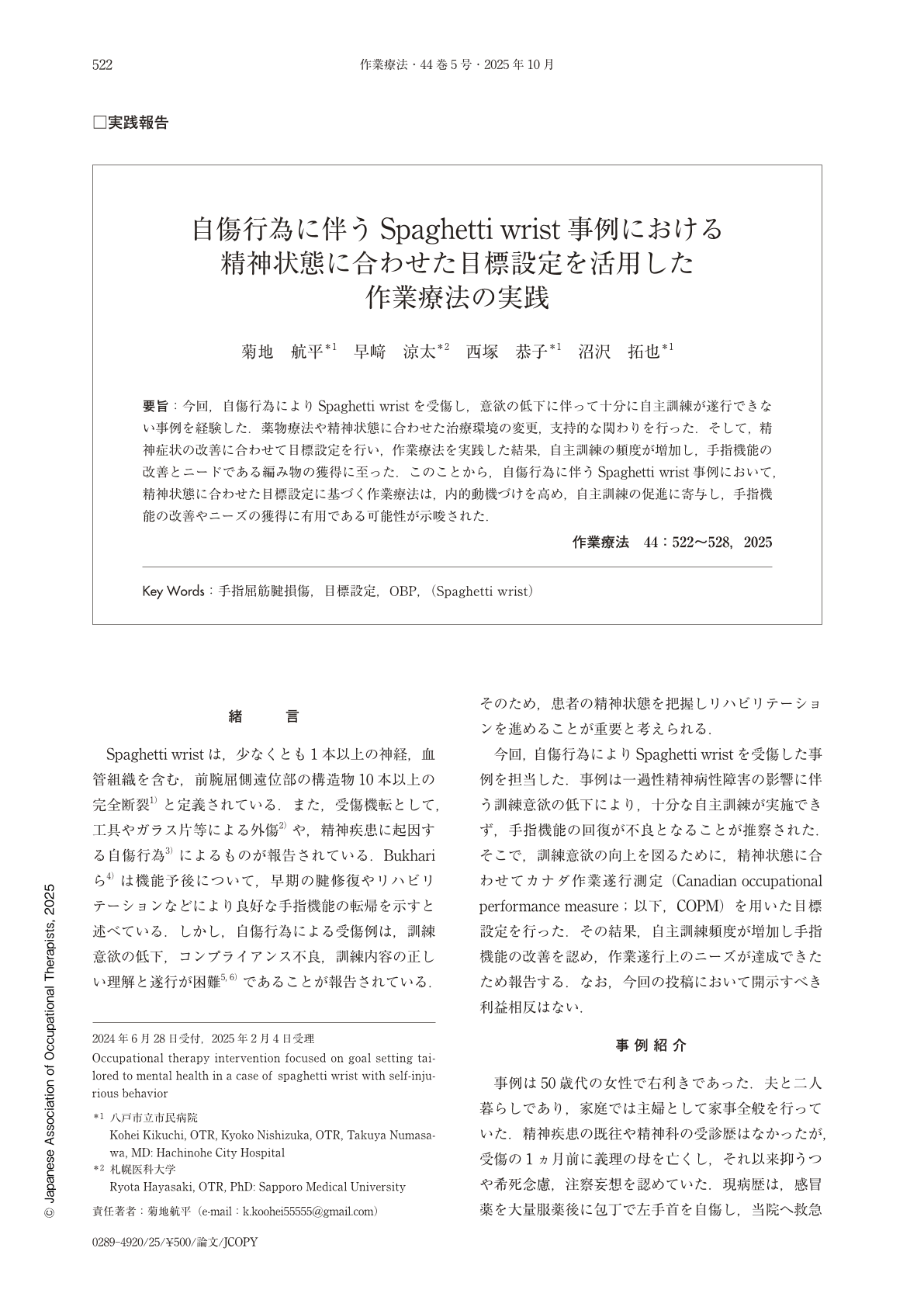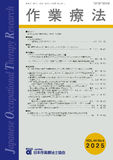Japanese
English
- 販売していません
- Abstract 文献概要
- 1ページ目 Look Inside
- 参考文献 Reference
要旨:今回,自傷行為によりSpaghetti wristを受傷し,意欲の低下に伴って十分に自主訓練が遂行できない事例を経験した.薬物療法や精神状態に合わせた治療環境の変更,支持的な関わりを行った.そして,精神症状の改善に合わせて目標設定を行い,作業療法を実践した結果,自主訓練の頻度が増加し,手指機能の改善とニードである編み物の獲得に至った.このことから,自傷行為に伴うSpaghetti wrist事例において,精神状態に合わせた目標設定に基づく作業療法は,内的動機づけを高め,自主訓練の促進に寄与し,手指機能の改善やニーズの獲得に有用である可能性が示唆された.
We present a case of spaghetti wrist caused by self-injurious behavior, where diminished motivation hindered the patient's engagement in self-directed training. The treatment plan included pharmacological intervention, adjustments to the therapeutic environment tailored to the patient's mental state, and supportive therapeutic interactions. With improvement in the patient's psychiatric symptoms, individualized goals were established, and occupational therapy was initiated. This approach resulted in increased participation in self-directed training, leading to functional recovery of the hand and fingers, as well as the successful acquisition of knitting skills, which aligned with the patient's personal interests and needs. This case highlights that, in spaghetti wrist associated with self-injurious behavior, occupational therapy incorporating goal setting adapted to the patient's mental state can enhance intrinsic motivation, foster self-directed training, and support improvements in hand function and the achievement of personally meaningful activities.

Copyright © 2025, Japanese Association of Occupational Therapists. All rights reserved.


